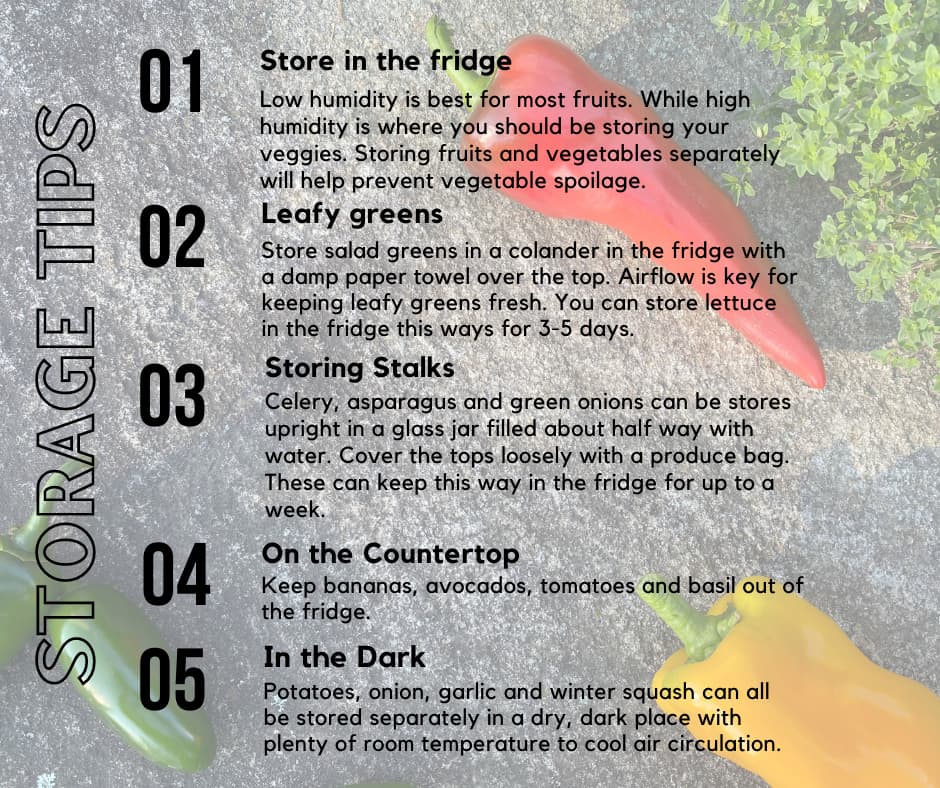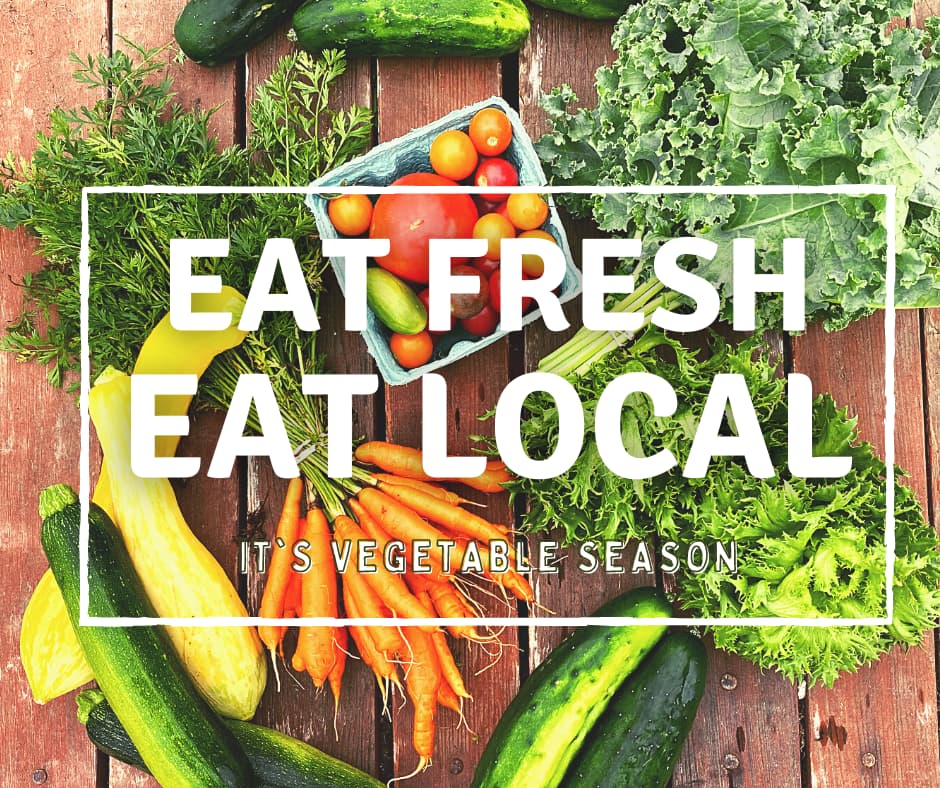a nutrition series by Michelle Chappel
When I was working on the farm, shout out to Stout Oak Farm in Brentwood, I would always ask my fellow farmers what their favorite vegetable was. You see, I love vegetables, I geek out over them. When I cook vegetables, they are not just a side, they are 90% of my plate. So as you can imagine summer is the best season for exploring new veggie options.
If you have a backyard garden, you know that the food that comes from it tastes the best. Sure, a big part of this is that you know the work and love you put into taking care of it, but also, it’s because the vegetables are picked at their ripest and you are eating them right away. Fresh and ripe taste different. It’s also when the vitamins and minerals are at their peak.
If you are a veggie lover, you can certainly taste the difference between a tomato in the winter and a seasonal summer tomato. I know many people who just don’t eat tomatoes in the winter the taste difference is that apparent. Do you ever stop to think about why they taste so blah in the winter? Well, it’s because they are not “in season” meaning our growing season. They are grown in South America or across the country and shipped up north. This means they are often picked underripe and ripen in a truck under false conditions.
When you can shop locally at your farmers market or local farm store you get quality, fresh, nutrient-dense vegetables as well as the benefit of getting to know your local farmers and supporting small businesses. You get to chat with the growers at the market, learn about how to make your home garden thrive, and even get new recipe ideas. Have you ever picked up an interesting new vegetable and thought how do I even cook this? Well, just ask the farmer. I can guarantee they will be happy to share their favorite way to cook that strange green plant in your hand. Visiting farmer’s markets and your local farm store is such a rewarding experience. As someone who has been on both sides of the table, I can say it’s rewarding for everyone. Farmers love their crops. They are pouring their blood sweat and tears into growing this food for you. I’ll always be a farmer before a nutritionist. Luckily for me, they both go together so well. Ask me about vegetables and not only will I share all the wonderful nutrients each one contains I’ll tell you about growing, harvesting them, and yup my favorite ways of cooking them.
Having a healthy diet and focusing on nutrition can be easy.
Not saying it is easy for all, but the concept is easy. Having a balanced diet containing a variety of protein, carbohydrates, and healthy fats is the first part. Choosing whole, real foods, versus processed convenience foods, and learning how to make delicious meals, cooked in ways to best preserve all the nutrients they contain. For me, when I plan my meals I often start with the vegetables, not the protein. I ask myself what I have, and what’s in season. Then I load up. If a recipe calls for a bell pepper, why not two or three different peppers? My cooking goal usually involves asking myself, “how can I get as many different vegetables as possible into this one pan?” Then I add the protein and pile the lot onto a starch, or whole grain of choice, and add in some healthy fats. Cook, drizzle or top your dish off with healthy fats such as olive oil, nuts, seeds, or avocado to balance things out. Just don’t be afraid to load up on the veggies. The more variety and colors the more nutrients you’re getting at each meal.
When a vegetable is harvested at its peak ripeness it is loaded with phytonutrients.
Vitamins such as A, B, C, and E, and minerals. When food is grown using organic farming practices this difference is that much greater. (1) Minerals such as iodine, selenium, zinc, and other trace minerals are found in the soil. If the soil is depleted by conventional farming practices these nutrients are not making it into the food and thus into you! Organic farmers and even many small farms that are not under the organic label follow organic growing practices. This means they are not using herbicides, pesticides, sewage sludge, or GMO seeds. (2) They use organic natural fertilizers (hello fish emulsion) plant cover crops, and even animal grazing to bring depleted nutrients back into the soil. Other practices such as utilizing no till or low till field management can also help to preserve nutrients by negating soil erosion. There’s so much that goes into growing food. I could go on and on. I encourage you to visit your local farm, or farmer’s market and talk with the farmers. Find out what they are doing to grow quality food and see what they are working on.
Even though our going season is short here in the Northeast there are so many small local farms that have food available most of the year. Check out Seacoast Eat Local to see a calendar of all the farmer’s markets available in our areas. See who’s growing what and where to shop by visiting their list of local farms on Seacoast Harvest. By getting to know what foods are in season and learning to eat seasonally you can have fresh vegetables all year!
I’ll even share a few tips on ways to store your fresh veggies to help them last.
So, what is my favorite vegetable?
There are too many to choose from really! But if I had to choose the one vegetable that always makes its way into my shopping basket, and into almost every supper, it would be the pepper. Why do I love them so much? First, they go with everything! Salad, pasta, stir-fry, chili, stuff them, eat them for breakfast, as a snack, and on and on. Peppers also contain a good amount of fiber and high amounts of water. Peppers are full of vitamin C. One cup of ripe red, yellow, or orange pepper contains more vitamin C than an orange. (5) Peppers also contain vitamin B6, vitamin K, potassium, folate, vitamin E, and beta carotene. Peppers are full of antioxidants; capsanthin, violaxanthin, lutein, quercetin, and luteolin, all of which have been associated with health benefits such as improving cardiovascular health, and eye health, and contain anti-inflammatory properties. (6,7)
What is your favorite vegetable?
Resources:
- Crinnion, Walter J. Organic Food Contain Higher Levels of Certain Nutrients, Lower Levels of Pesticides, and May Provide Health Benefits of the Consumer. Alten Med ev 2010;15(1):4-12
- https://www.ams.usda.gov/rules-regulations/organic/national-list
- https://www.seacoasteatlocal.org/
- https://seacoastharvest.org/
- https://ods.od.nih.gov/factsheets/VitaminC-HealthProfessional/
- Agarwal, R., et al. (2020). Orange capsicums and chillies as a potential source of dietary zeaxanthin, an important macular carotenoid for eye health [Abstract].
- Sun T, et al. Antioxidant activities of different colored sweet bell peppers (Capsicum annuum L.). J Food Sci. 2007 Mar;72(2):S98-102.

Storage Tips
Store in the Fridge.
Use those crisper drawers. When you open the vent you are creating less humidity while closing the vent creates more humidity.
Low humidity is best for most fruits. While high humidity is where you should be storing your veggies. Storing fruits and vegetables separately will help prevent vegetable spoilage.
Remove the tops of beets, radishes and salad turnips to help them last longer in the fridge. Don’t forget you can eat the greens of all of these veggies. Store root veggies this way in a plastic bag within the fridge and they can last for 2 weeks or longer.
Storing Leafy Greens.
Store pre-washed or freshly washed and spun salad lettuce in a colander in the fridge. Place a damp (not dripping) paper towel over the top to protect the leaves from drying out. Airflow is key for keeping leafy greens fresh. You can store lettuce in the fridge this ways for 3-5 days. Just rewet the paper towel if leaves begin to dry out.
Storing Stalks.
Store tall stalks such as celery, asparagus and green onions upright in a glass jar filled about half way with water. Then cover the tops loosely with a produce bag and secure with a rubber band. Make sure to remove the rubber band from the bunched stalks before placing in the jar. Asparagus will stay fresh this way for about 1 week.
If your green onions start to produce roots, plant them! You can simply trim off the greens and keep the onions going for up to two years!
On the Countertop.
Fruit such as banana, and avocado should be stored on the counter. Tomatoes, fruit/vegetable whatever you want to call it should also be stored on the counter out of direct sunlight. Also keep your basil out to the fridge. Use fresh basil as quickly as possible or store it in a sealed bag with lots of air, think fish bowl.
In The Dark.
Potatoes, onion, garlic and winter squash can all be stored separately in a dry, dark place with plenty of room temperature to cool air circulation. Paper bags are a nice way to keep these vegetables out of direct light and dry. Just keep like with like to prevent eyes, spots and spoilage.

